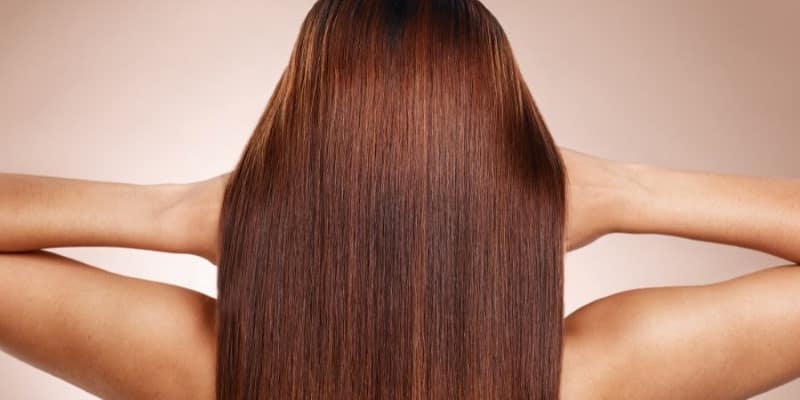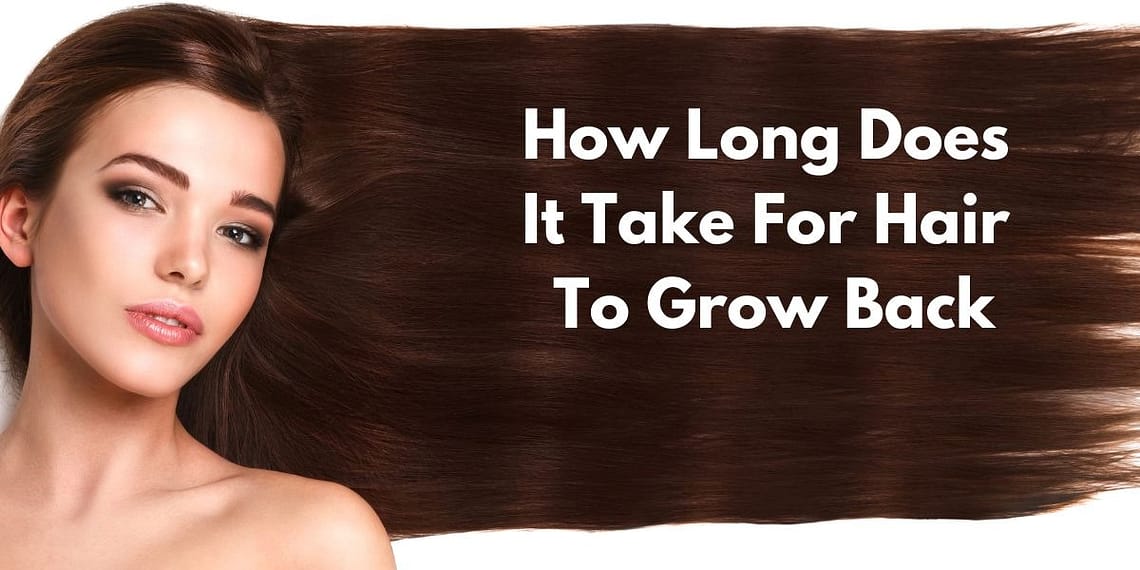Are you wondering how long it takes for hair to grow back? Well, you’re in the right place! In this article, we’ll explore the different factors that affect hair growth and provide you with some insightful FAQs to give you a better understanding of the process.
Whether you’re dealing with a bad haircut or are simply curious about the natural growth cycle of your hair, we’ve got you covered. So, let’s dive in and discover the fascinating world of hair regrowth!
Factors That Influence Hair Growth
Genetics
Genetics play a major role in determining the rate at which your hair grows. This means that some individuals are genetically predisposed to have faster or slower hair growth than others. If you come from a family with a history of slow hair growth, you may have to be more patient when waiting for your hair to grow.
Age
As we age, our hair growth naturally slows down. Hair follicles go through a natural aging process and gradually produce thinner and less abundant hair. It is essential to understand that hair growth is a slower process as you get older. So, don’t be alarmed if you notice a decrease in hair growth as you age.
Health
Your overall health also plays a significant role in hair growth. If you are experiencing any underlying health conditions such as nutrient deficiencies or hormonal imbalances, they can affect your hair growth. It is essential to maintain a healthy lifestyle and address any health concerns to support optimal hair growth.
Nutrition
Proper nutrition is crucial for healthy hair growth. Your hair follicles require essential vitamins and minerals to produce strong, vibrant hair. Make sure to include a balanced diet rich in protein, vitamins A, C, D, and E, biotin, and zinc. These nutrients support the health and growth of your hair, ensuring it grows at its optimal rate.
Hormones
Hormones play a vital role in hair growth. Hormonal imbalances, such as those experienced during pregnancy or menopause, can affect the speed of hair growth. Additionally, conditions like polycystic ovary syndrome (PCOS) can disrupt hormone levels and result in adverse effects on hair growth.
Also Check: Removing Paint From Hair: Methods
Understanding the Hair Growth Cycle
Anagen Phase
The anagen phase is the active growth phase of the hair follicles. During this phase, the hair cells divide rapidly, and the hair shaft grows longer. On average, this phase lasts between two to six years, and around 85% of our hair is in the anagen phase. The duration of the anagen phase varies from person to person and is influenced by factors such as genetics and overall health.
Catagen Phase
After the anagen phase, the hair follicles enter the catagen phase. This is a transitional phase, where the hair follicles detach from the blood supply and shrink in size. The catagen phase typically lasts for one to two weeks.
Telogen Phase
The telogen phase is the resting phase of the hair growth cycle. During this phase, the hair follicles are not actively growing, and the old hair remains attached to the follicle. This phase lasts for about two to three months, after which the old hair sheds, making way for new hair to grow.
Hair Growth Rate
Average Hair Growth Rate
On average, hair grows about half an inch (1.25 centimeters) per month. This translates to approximately six inches (15 centimeters) of hair growth per year. However, it is important to note that the hair growth rate can vary from person to person.
Factors Affecting Hair Growth Rate
Several factors can influence the rate at which your hair grows. Genetics, overall health, lifestyle, and hair care practices can all impact hair growth rate. By maintaining a healthy lifestyle and following proper hair care techniques, you can optimize your hair growth rate.

Hair Growth Rate in Different Areas of the Body
Scalp
Hair on the scalp tends to have the fastest growth rate compared to other areas of the body. With proper care and nutrition, scalp hair can grow at an average rate of half an inch per month.
Eyebrows
Eyebrow hair typically grows slower than scalp hair. On average, eyebrow hair grows at a rate of one-third to one-fourth of an inch per month.
Eyelashes
Eyelashes have the slowest growth rate compared to other types of hair. They typically grow at a rate of approximately 0.12 millimeters per day, which amounts to about one-third of an inch per month.
Facial Hair
Facial hair growth rate varies from person to person. On average, it grows at a rate similar to scalp hair, about half an inch per month.
Body Hair
Body hair generally grows at a slower rate compared to scalp hair. The growth rate can vary depending on factors such as genetics, gender, and hormonal influences.
Ways to Promote Hair Growth
Maintaining a Healthy Diet
Eating a well-balanced diet that includes essential nutrients for hair growth is crucial. Ensure that your diet includes protein, vitamins, minerals, and healthy fats. Foods like eggs, nuts, fish, fruits, and vegetables can provide the necessary nutrients for healthy hair growth.
Proper Hair Care
Taking care of your hair is essential for promoting optimal growth. This involves using gentle hair products, avoiding excessive heat styling, minimizing chemical treatments, and keeping your hair clean and well-moisturized.
Scalp Massage
Scalp Massaging can help stimulate blood flow to the hair follicles, promoting hair growth. Use your fingertips to gently massage your scalp in circular motions for a few minutes every day.
Using Essential Oils
Certain essential oils, such as lavender oil, rosemary oil, and peppermint oil, are believed to promote hair growth. Massage a few drops of diluted essential oil onto your scalp to reap their potential benefits.
Avoiding Heat and Chemical Damage
Excessive use of heat styling tools and frequent chemical treatments can damage the hair shaft and hinder its growth. Limit the use of heat and opt for natural hairstyles to minimize damage and encourage healthy hair growth.
Common Hair Growth Myths
Cutting Hair Makes It Grow Faster
Contrary to popular belief, cutting your hair does not make it grow faster. Hair growth occurs at the scalp, and regular haircuts only help remove split ends and maintain the overall health of your hair.
Brushing Hair Frequently Promotes Growth
While brushing your hair can help distribute natural oils and detangle it, excessive brushing does not promote hair growth. In fact, aggressive brushing can lead to hair breakage and damage.
Shampooing Every Day Leads to Faster Hair Growth
Shampooing your hair daily does not directly affect its growth rate. However, using a gentle shampoo and keeping your scalp clean can contribute to the overall health of your hair, creating a favorable environment for growth.

Source: TheTechBrain AI
Hair Growth After Hair Loss or Damage
Recovering from Temporary Hair Loss
Temporary hair loss can occur due to various factors such as stress, hormonal changes, diet changes, or certain medical conditions. In most cases, the hair will regrow naturally once the underlying cause is addressed.
Regrowing Hair After Chemotherapy
Chemotherapy treatments can cause temporary hair loss, but hair usually regrows within a few months after the treatment is completed. It is important to be patient and provide your body with the necessary nutrients for hair regrowth during this period.
Restoring Hair After Damage
If your hair has suffered damage from excessive heat styling, chemical treatments, or other factors, it is possible to restore its health and promote regrowth. Utilize proper hair care practices, nourish your hair with the right nutrients, and provide it with regular deep conditioning treatments to encourage restoration.
Frequently Asked Question (FAQs)
Can stress affect hair growth?
Yes, excessive stress can lead to hair loss or stunted hair growth. High-stress levels can disrupt the hair growth cycle, causing more hair to enter the resting phase and eventually fall out. Managing stress through relaxation techniques and self-care can help maintain healthy hair growth.
Do hair growth supplements work?
Hair growth supplements can be beneficial if they contain essential vitamins and minerals that support hair health. However, it is always best to consult with a healthcare professional before starting any new supplement regimen.
Does frequent hair coloring slow down hair growth?
Frequent hair coloring can lead to damage and breakage, which can make hair appear to grow slower. However, the color itself does not directly affect the speed of hair growth. Proper hair care and maintenance can help minimize damage caused by frequent coloring.
Conclusion
Hair growth is influenced by various factors, including genetics, age, health, nutrition, hormones, and hair care practices. By understanding the hair growth cycle and implementing healthy lifestyle choices, you can support optimal hair growth. Remember to be patient, as hair growth is a gradual process that requires consistent care and nourishment.





